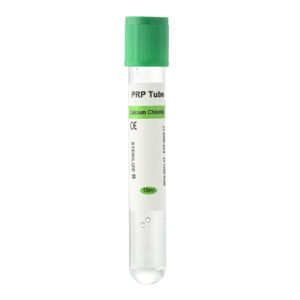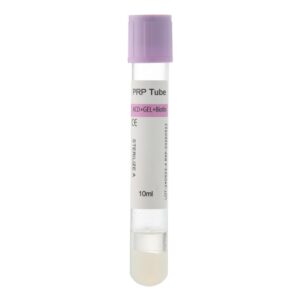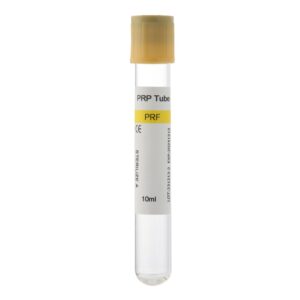When evaluating regenerative medicine supplies for your clinic or medical practice, one question comes up frequently: Is PRF and PRP the same? The short answer is no — although related, they differ significantly in preparation method, biological behavior, and clinical use. For procurement professionals deciding whether to source PRF tubes or PRP tubes, understanding these distinctions is essential. This guide walks you through what PRP and PRF are, how they differ, their workflows, clinical applications, and how to select a reliable supplier.
Understanding PRP vs PRF: What Are These Products?
To understand why PRF is not the same as PRP, it helps to start with precise definitions.
- PRP (Platelet-Rich Plasma)
- PRP is a liquid plasma concentrate extracted from the patient’s blood. The process typically uses anticoagulants to prevent clotting. Blood is centrifuged at higher speeds to isolate a platelet-rich layer, which can then be injected into targeted tissues.
- PRF (Platelet-Rich Fibrin)
- PRF, in contrast, is prepared without anticoagulants. Blood is spun at lower speeds, allowing a natural fibrin matrix to form. This produces a gel-like structure containing platelets, white blood cells, and regenerative cells.
Because of these differences, PRF is not simply a “thicker PRP.” It behaves differently, lasts longer, and releases growth factors more slowly. Both are autologous, but their biological structures and clinical performance are distinct.
Key Differences: Why PRF ≠ PRP
Understanding the key differences helps buyers select products that align with clinical needs:
1. Preparation Method
- PRP uses anticoagulants to prevent clotting.
- PRF uses no additives, promoting natural fibrin formation.
2. Centrifugation Protocol
- PRP is centrifuged at high speed.
- PRF uses lower-speed centrifugation, resulting in a fibrin scaffold.
3. Cellular Composition
- PRP contains a high platelet concentration in liquid form.
- PRF includes platelets, white blood cells, and more regenerative components.
4. Release of Growth Factors
- PRP releases growth factors quickly, usually within hours.
- PRF releases them slowly over several days, thanks to its fibrin matrix.
5. Clinical Behavior
- PRP spreads easily as a liquid, ideal for injection or microneedling.
- PRF behaves like a natural biological gel, offering structural support during healing.
Because of these differences, PRF is often considered a next-generation option for practices wanting more sustained regenerative effects. If you want to explore PRF tubes or PRP kits that align with these needs, you can always visit the Siny PRP product page for guidance.
Applications and Use Cases: When to Use PRP vs PRF
Your clinical applications determine whether PRP or PRF — or both — should be part of your inventory.
Aesthetics & Skin Rejuvenation
- PRP is effective for microneedling, superficial rejuvenation, and rapid collagen stimulation.
- PRF works better for deeper rejuvenation, under-eye treatment, or as a natural filler due to its gel-like consistency.
Hair Restoration
- PRP is widely used to stimulate follicles and improve hair density.
- PRF may provide longer-lasting effects, reducing treatment frequency and enhancing patient satisfaction.
Oral, Dental, and Surgical Applications
- PRF serves as a natural scaffold in wound healing, bone grafting, and soft-tissue repair.
- PRP is suitable for liquid-based applications such as tendon injuries or localized injections.
Understanding your clinic’s treatment offerings helps determine whether PRP tubes, PRF tubes, or hybrid kits should be prioritized. For tailored procurement guidance, you can reach out to the Siny PRP support team.
Processing Workflow and Operational Considerations
From a procurement perspective, PRP and PRF are not interchangeable, even though they derive from the same biological material.
Equipment Requirements
- PRP typically requires high-speed centrifuges and anticoagulant tubes.
- PRF requires low-speed centrifugation and additive-free tubes designed for natural clot formation.
Timing & Stability
- PRP remains usable liquid for longer periods after centrifugation.
- PRF needs to be applied quickly, often within minutes, before full clot formation occurs.
Staff Training
Protocols must be standardized to ensure consistent platelet concentrations and gel formation. Training affects not only treatment outcomes but also product usage efficiency.
Supplier Reliability
Because tube material, additives, sterility, and vacuum integrity directly affect PRP/PRF quality, choosing a dependable supplier is essential. A provider like Siny PRP ensures batch consistency, predictable performance, and technical support — all crucial for smooth clinical operations. For product information, feel free to visit our product catalog.
Why Choosing the Right Supplier Matters
Reliable procurement is more than just buying tubes — it’s about sustaining clinical quality, patient satisfaction, and operational efficiency.
Why supplier choice is critical:
- Product Quality: High-grade tubes reduce failure rates and ensure consistent platelet yields.
- Sterility & Certification: Proper manufacturing prevents contamination and procedural complications.
- Consistency: Variability in tube quality affects platelet concentration and fibrin structure.
- Support: Suppliers who offer technical training and protocols help clinics reduce errors.
- Scalability: As your clinic grows, you need a partner able to support increasing demand.
Choosing a dependable supplier like Siny PRP ensures stable product performance and long-term reliability. You are welcome to contact us for procurement recommendations tailored to your practice.
Finally
In a rapidly expanding regenerative medicine market, it is easy to feel overwhelmed by product options, technical terminology, and inconsistent quality standards. Understanding the true differences between PRF and PRP not only empowers your clinical team but also protects your patients by ensuring that the biological materials they rely on are prepared correctly and safely. Ultimately, the success of your treatments depends not only on technique or technology but also on the quality and reliability of the PRP and PRF supplies you choose. If you are ready to upgrade your procurement process with stable, certified, and high-performance solutions, you can always visit Siny PRP or contact our team for direct support.
FAQs
Q1: Is PRF simply an improved version of PRP?
Not exactly. PRF isn’t “better” in every situation, but it offers longer-lasting effects due to its fibrin matrix and slow growth-factor release. PRP is still ideal for treatments requiring quick biological activity.
Q2: Can the same centrifuge settings be used for PRP and PRF?
No. PRP typically requires high-speed centrifugation, while PRF uses low-speed settings to preserve the fibrin network and cellular components.
Q3: Which treatment lasts longer after injection?
PRF usually lasts longer due to its gel-like fibrin matrix and sustained release of growth factors.
Q4: When should I choose PRP over PRF?
PRP is generally preferred for microneedling, hair restoration, and injectable treatments requiring smooth flow. PRF is preferred for deeper tissue regeneration, natural fillers, and surgical scaffolding.
Q5: How do I choose a trustworthy PRP/PRF supplier?
Look for certified production, stable vacuum performance, transparent testing data, and responsive technical support. A supplier like Siny PRP offers reliable, consistent-quality PRP and PRF tubes to support clinical success.





